Abstract
A countrywide prospective study aimed at establishing the prevalence of the haemoglobinopathy genes in the Portuguese population was carried out by screening 15,208 randomly selected blood samples from young males. This male based survey provided the opportunity of assessing simultaneously the prevalence of the red cell enzyme glucose-6-phosphate dehydrogenase (G6PD) deficiency, thus giving a picture of these important hereditary anaemias in Portugal. The results showed a low average frequency of beta thalassaemia (0.45%) and haemoglobin S (0.32%) carriers as well as G6PD deficiency (0.51%). However, these disorders are unevenly distributed throughout the country with a higher prevalence in some areas, mainly in the south. The relationship of this pattern of haemoglobinopathies to the known haplotypes linked to beta thalassaemia and sickle cell disease, relevant historical events, and local selective pressure was investigated. Hb D and Hb J are the commonest other structural variants. The implemented programme for control of these hereditary anaemias is described.
Full text
PDF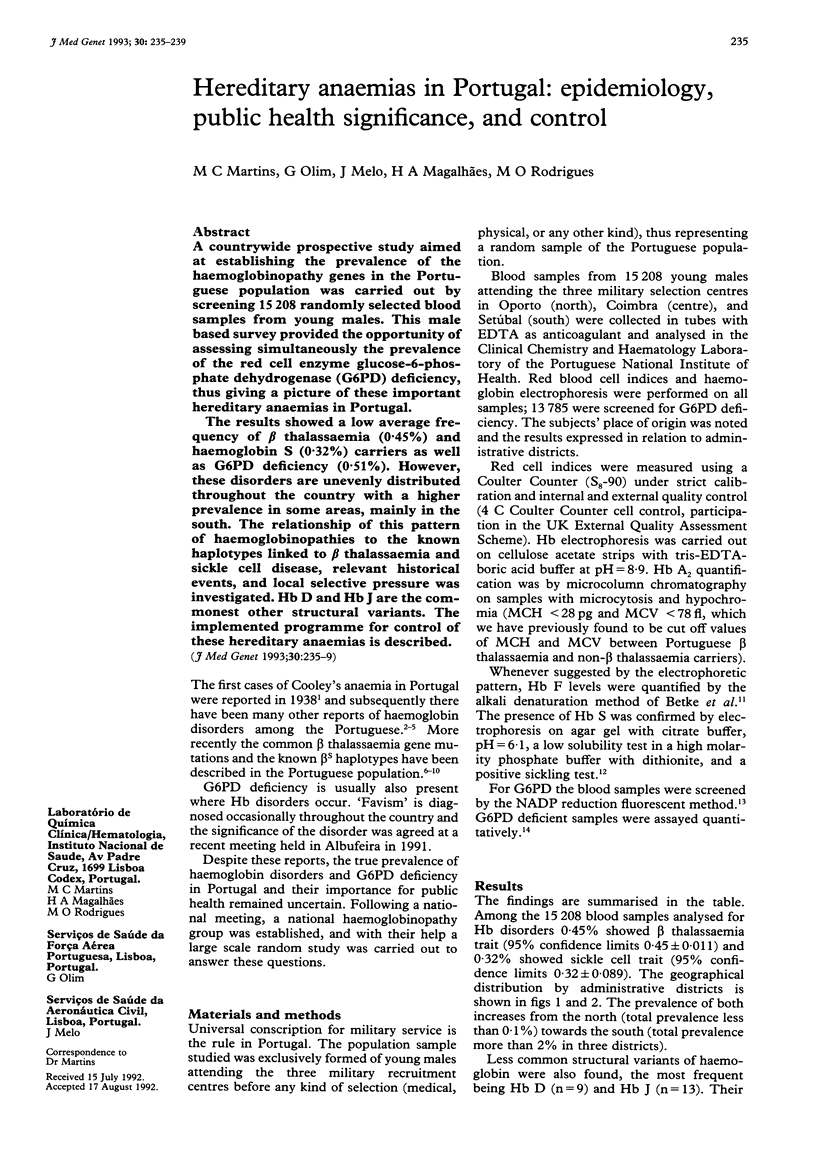
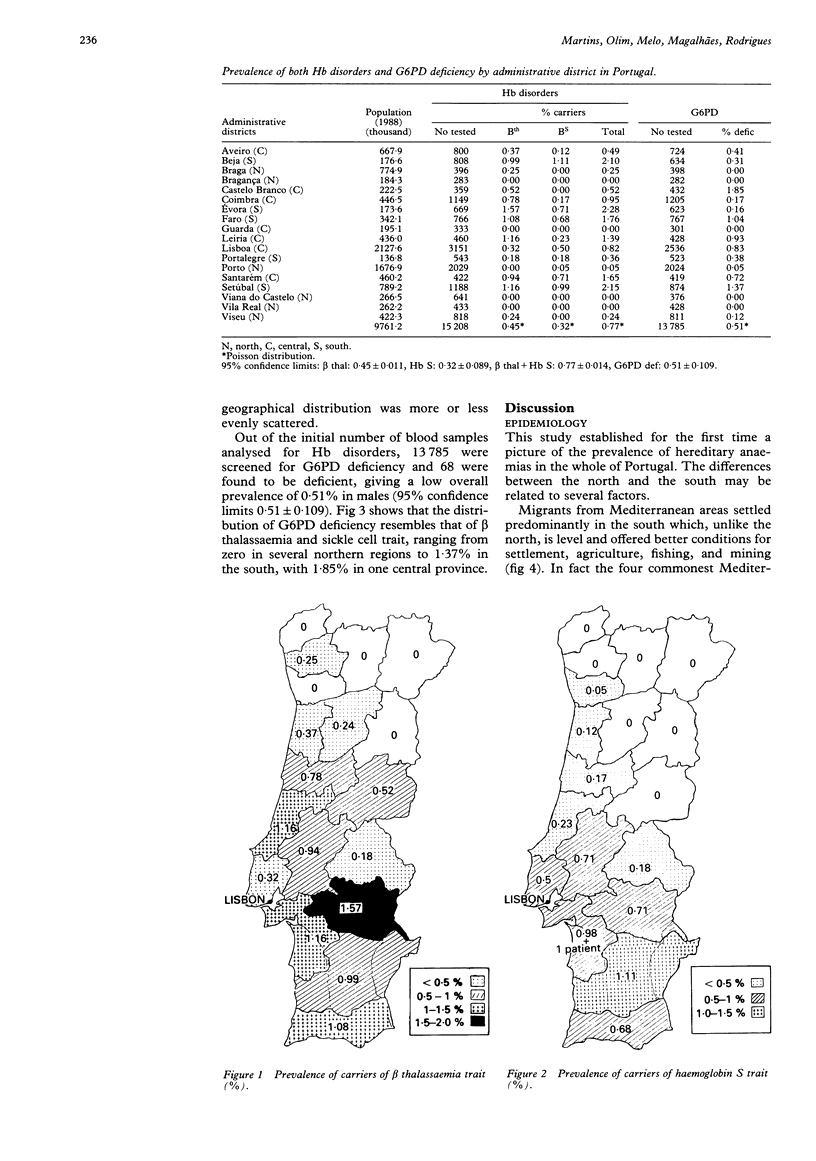
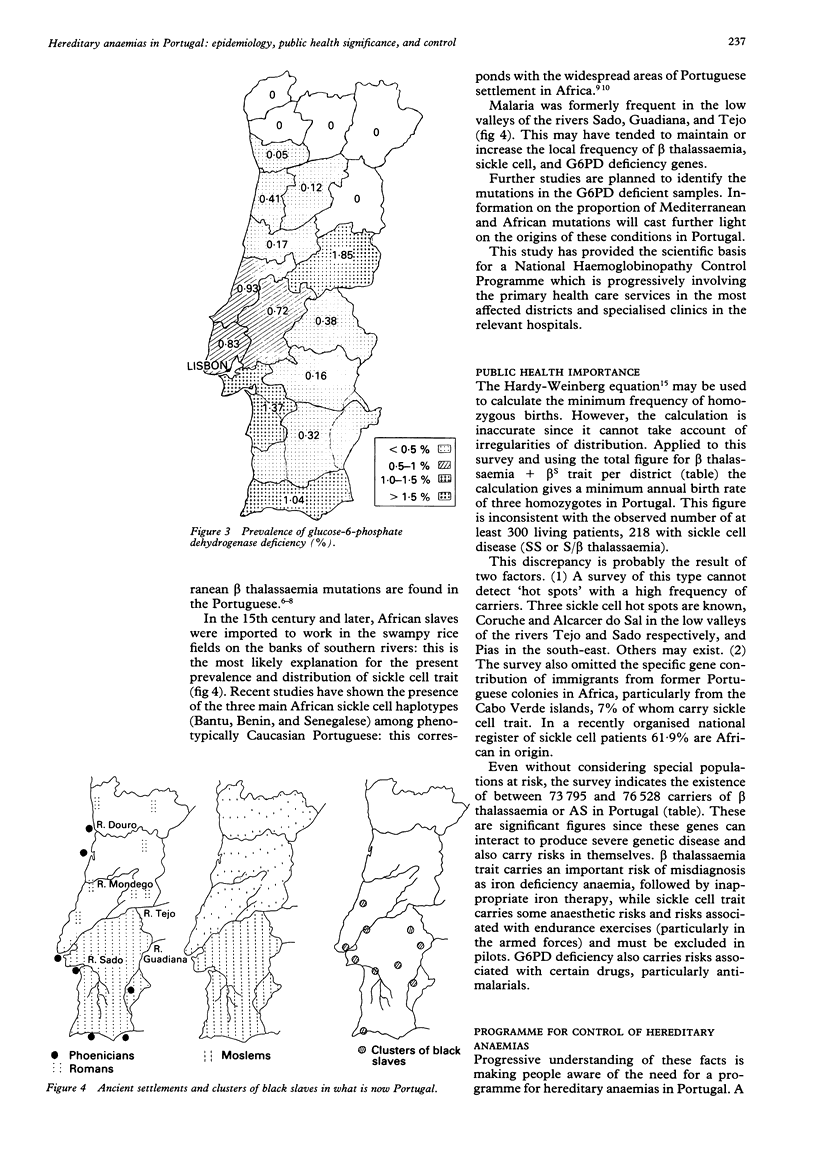
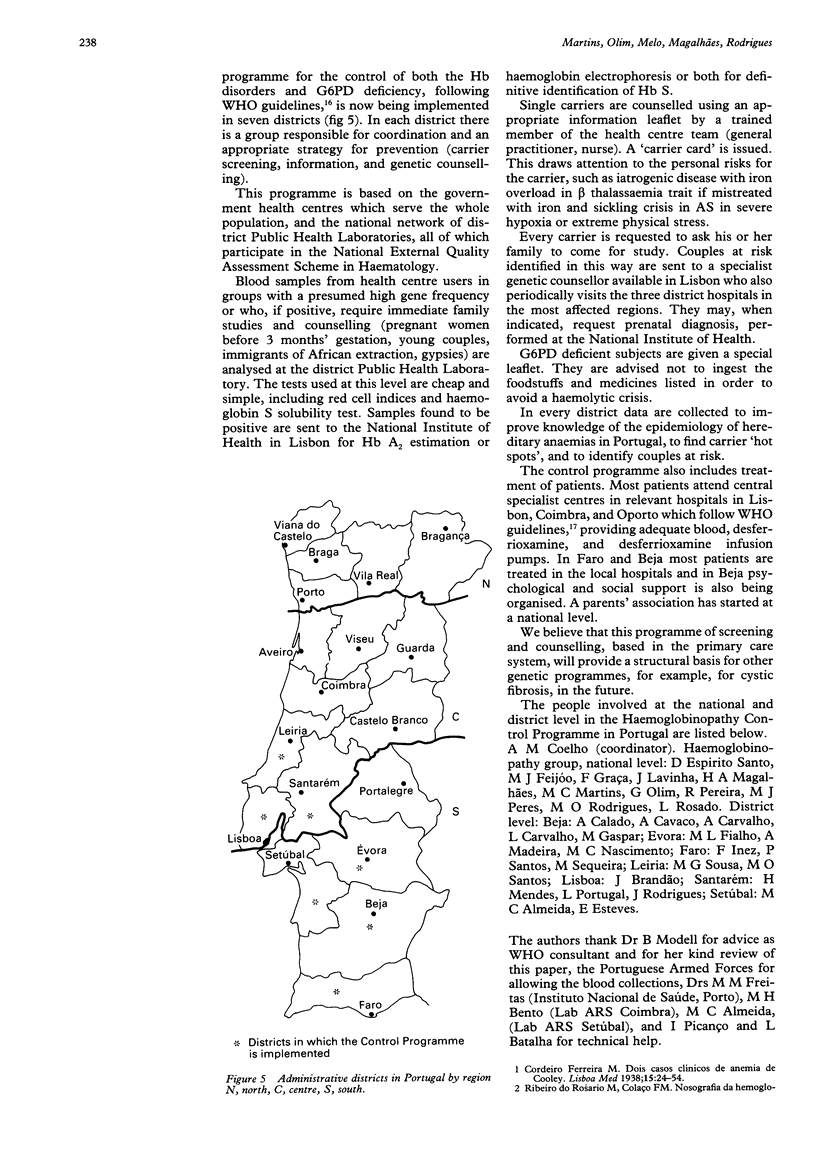
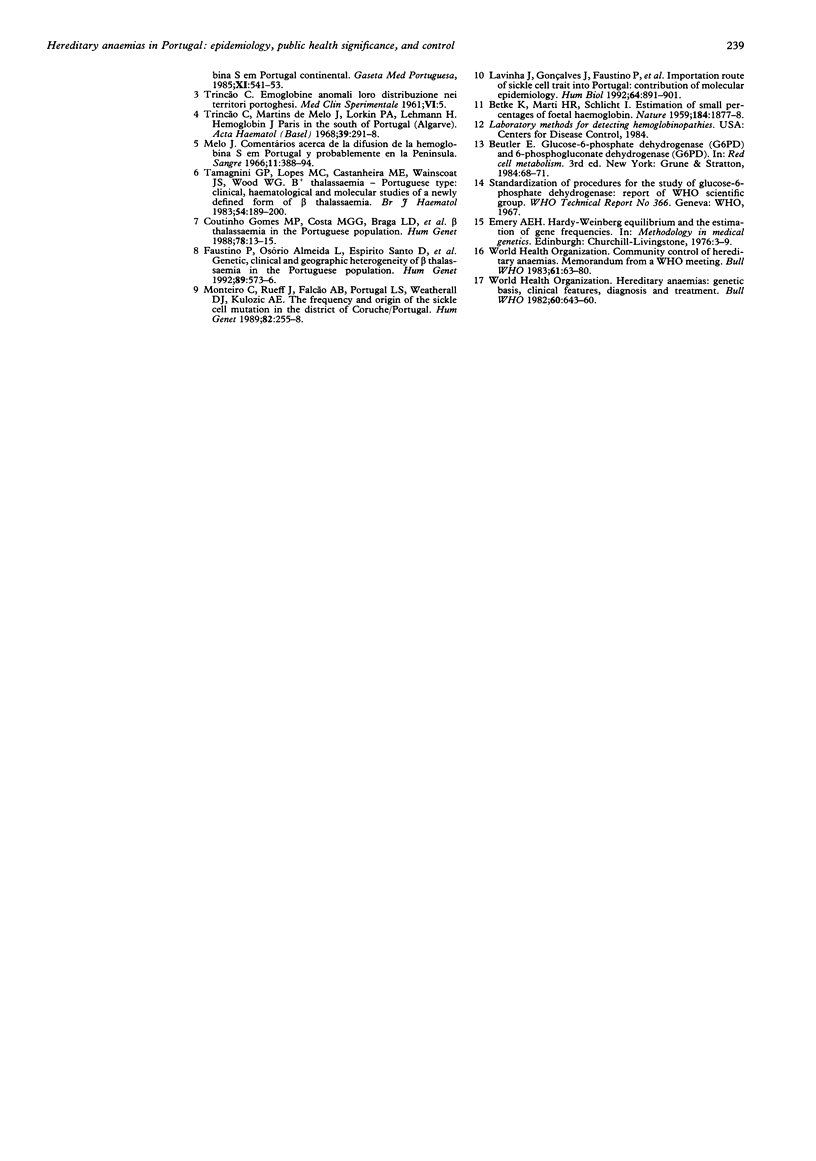
Selected References
These references are in PubMed. This may not be the complete list of references from this article.
- BETKE K., MARTI H. R., SCHLICHT I. Estimation of small percentages of foetal haemoglobin. Nature. 1959 Dec 12;184(Suppl 24):1877–1878. doi: 10.1038/1841877a0. [DOI] [PubMed] [Google Scholar]
- Faustino P., Osório-Almeida L., Barbot J., Espírito-Santo D., Gonçalves J., Romão L., Martins M. C., Marques M. M., Lavinha J. Novel promoter and splice junction defects add to the genetic, clinical or geographic heterogeneity of beta-thalassaemia in the Portuguese population. Hum Genet. 1992 Jul;89(5):573–576. doi: 10.1007/BF00219188. [DOI] [PubMed] [Google Scholar]
- Gomes M. P., da Costa M. G., Braga L. B., Cordeiro-Ferreira N. T., Loi A., Pirastu M., Cao A. Beta-thalassemia mutations in the Portuguese population. Hum Genet. 1988 Jan;78(1):13–15. doi: 10.1007/BF00291226. [DOI] [PubMed] [Google Scholar]
- Lavinha J., Gonçalves J., Faustino P., Romão L., Osório-Almeida L., Peres M. J., Picanço I., Martins M. C., Ducrocq R., Labie D. Importation route of the sickle cell trait into Portugal: contribution of molecular epidemiology. Hum Biol. 1992 Dec;64(6):891–901. [PubMed] [Google Scholar]
- Monteiro C., Rueff J., Falcao A. B., Portugal S., Weatherall D. J., Kulozik A. E. The frequency and origin of the sickle cell mutation in the district of Coruche/Portugal. Hum Genet. 1989 Jun;82(3):255–258. doi: 10.1007/BF00291165. [DOI] [PubMed] [Google Scholar]
- Tamagnini G. P., Lopes M. C., Castanheira M. E., Wainscoat J. S., Wood W. G. Beta + thalassemia--Portuguese type: clinical, haematological and molecular studies of a newly defined form of beta thalassaemia. Br J Haematol. 1983 Jun;54(2):189–200. doi: 10.1111/j.1365-2141.1983.tb02087.x. [DOI] [PubMed] [Google Scholar]
- Trincao C., De Melo J. M., Lorkin P. A., Lehmann H. Haemoglobin J Paris in the south of Portugal (Algarve). Acta Haematol. 1968;39(5):291–298. doi: 10.1159/000208973. [DOI] [PubMed] [Google Scholar]


